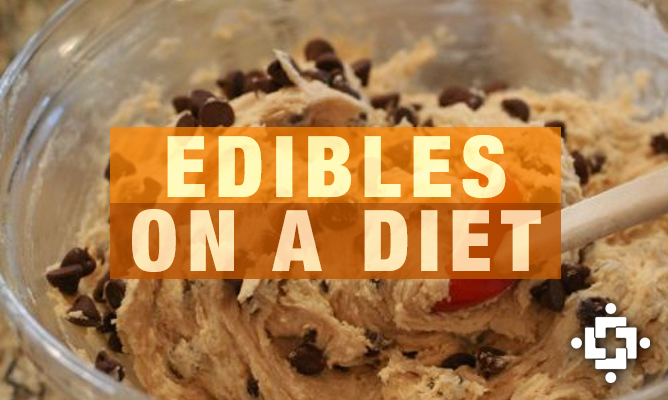
Tips For Creating Infused Edibles For Patients With Special Dietary Needs
Mary Poppins wasn’t just blowing smoke when she sang, “Just a spoonful of sugar helps the medicine go down.” There’s proof lining the shelves of dispensaries across the country, and the choices in infused edibles have never been better.
But for some patients, it’s more complicated than choosing between Dr. Robert’s Chocolate Trip Cookie and Compassion Edibles’ Traditional French Chocolate Tainted Truffles. People with special dietary restrictions can find it tricky to find edibles that meet their needs.
Consider for a minute a hypothetical patient who obtained his medical marijuana card because he’s been battling lung cancer – smoking is out of the question. However, he has diabetes, so a constant diet of sugary edibles isn’t a viable option either. Furthermore, he suffers from chronic migraines, with a long list of food triggers, including eggs, dairy and wheat.
That just slammed the door on most of the sugared treats and baked goods in the cooler, however there are a number of infused edible options available for patients with special dietary restrictions.
Edibles For Patients With Diabetes
For obvious reasons, most infused candies, sodas, popsicles and ice creams are going to have issues with sugar. Many brownie recipes call for as much as 2 cups of sugar, where more diabetic-friendly recipes run as low as 1/3 cup.
So, other sources of sweetness, like applesauce, sugar free pudding, and alternative sweeteners (ex. Splenda, honey, agave, xylitol) often come into play when crafting edibles for diabetic patients.
“Alternative sweeteners come in all forms – liquid and granulated, natural and artificial.”
Alternative sweeteners come in all forms – liquid and granulated, natural and artificial. Splenda is generally considered the best, partly because it’s stable for baking. They even make a delightful brown sugar blend that’s half Splenda and half brown sugar.
Some alternative sweeteners are extremely concentrated, but are sold with a bulking agent included – so that they can be measured cup for cup like sugar. Others aren’t (ex. Stevia), and you will have to make adjustments.
Edibles For Patients With Dairy Intolerance
Dairy intolerance can make a patient unable to use products made with butter, milk, or cream in the recipe. That could nix baked goods, rice krispy treats, ice cream, caramels, and more from their options.
The easiest route to making edibles for patients with dairy intolerance may be to adapt recipes with non-dairy alternatives like oil or margarine, or a non-dairy milk in place of regular milk. A coconut oil-based cannabis “butter” would be great here, as would coconut milk.
Vegan-Friendly Cannabis Infused Edibles
In creating edibles for vegan community, you will want to continue your dairy modifications. However, you must take it a step further by removing eggs from the equation.
That one replacement would help patients who are vegan or unable to eat eggs due to migraines. Of course, it would also be a great option for patients who are avoiding eggs all-together due to cholesterol concerns.
Try a product like EnerG Egg Replacer – a powdered culinary egg substitute available in health food stores. You can also get yogurt made from rice or coconut – ¼ cup of yogurt equals one egg.
Gluten-Free Infused Edibles
 Gluten is found in wheat, rye, spelt, triticale, kamut, graham flour, farina, couscous, bulgur, barley, and possibly in bran, food starch, and oats. It can be damaging to the digestive system in patients with Celiac disease, so adding a few gluten-free edible options to your arsenal of goodies is always a plus.
Gluten is found in wheat, rye, spelt, triticale, kamut, graham flour, farina, couscous, bulgur, barley, and possibly in bran, food starch, and oats. It can be damaging to the digestive system in patients with Celiac disease, so adding a few gluten-free edible options to your arsenal of goodies is always a plus.
Switching to other flours will be necessary; it takes some experimentation, but there are ample options – rice flours and coconut flours, sweet potato and many more. Health food stores (i.e. Whole Foods) carry lots of varieties, as does Amazon.
“Change your expectations of what dough looks like when you begin gluten-free baking, as the texture is often much different than traditional dough.”
One premixed blend worth trying is “Mamas Coconut Blend,” which contains white rice flour, tapioca flour, potato starch, organic coconut flour, and sweet rice flour.
Change your expectations of what dough looks like when you begin gluten-free baking, as the texture is often much different than traditional dough. But never fear, patients who need gluten-free products are accustomed to slightly different textures.
Edibles For Patients With Chronic Migraines and More
 Migraine sufferers can get headaches from many sources – from changing weather pressure and stress to “food triggers.” So, patients with excessive migraines have to be aware of the edibles they eat. Chocolate, dairy, wheat, gluten, eggs, bananas, peanut butter, citrus, soy, cheese, nuts, butter, MSG in any of its disguised forms are each known triggers. With this in mind, just one ingredient can make a product off-limits.
Migraine sufferers can get headaches from many sources – from changing weather pressure and stress to “food triggers.” So, patients with excessive migraines have to be aware of the edibles they eat. Chocolate, dairy, wheat, gluten, eggs, bananas, peanut butter, citrus, soy, cheese, nuts, butter, MSG in any of its disguised forms are each known triggers. With this in mind, just one ingredient can make a product off-limits.
This is an issue that I personally battle with – eggs, chocolate, soy, dairy, nuts and wheat keep me from being able to buy many infused edibles. But every so often I run across a vegan-friendly recipe that meets my needs, and I do handsprings.
“More patients turning to medical marijuana every day means statistically there will be more patients with dietary restrictions.”
Surely I am not alone in this regard – the demand for health-conscious infused edibles is pretty large. More patients turning to medical marijuana every day means statistically there will be more patients with dietary restrictions.
If you’re a patient accustomed to dealing with dietary restrictions, do you have some great recipes that might convert nicely to a medicated edible? Take it with you to the dispensary – maybe other patients in your collective are dealing with the same issues.
If you have a tried and true recipe that already has a following, see if dispensaries have had requests for a gluten-free or vegan-friendly version. Proactive vendors expanding into niche markets like these will only help more patients find the sort of products they need.
Christy A. Caballero has been dealing with chronic migraine for more than 30 years. Her brief experience with medical cannabis has given her reason to hope for a better quality of life, and she wants …
